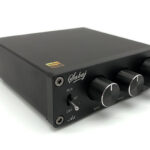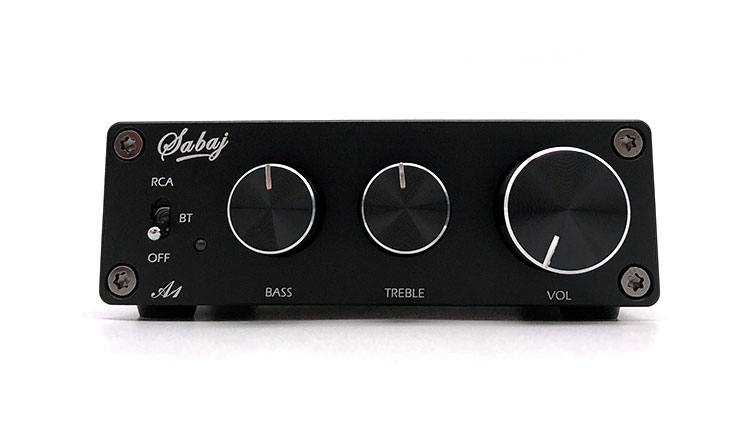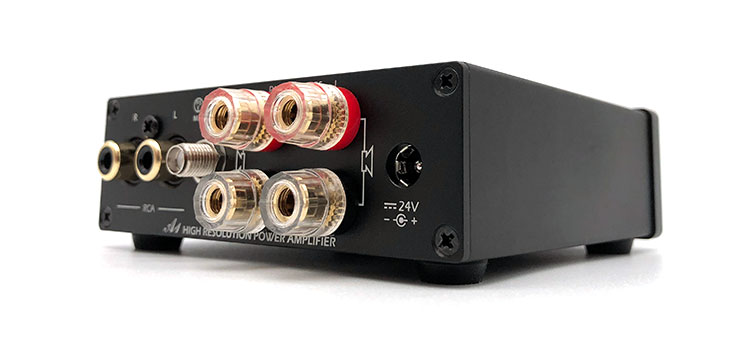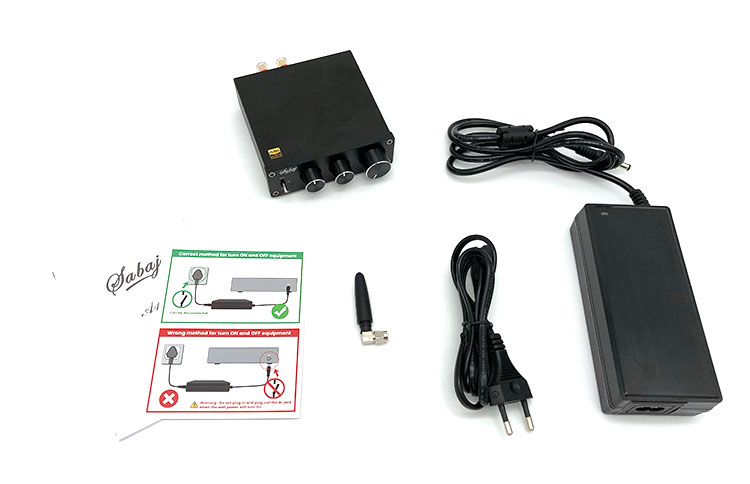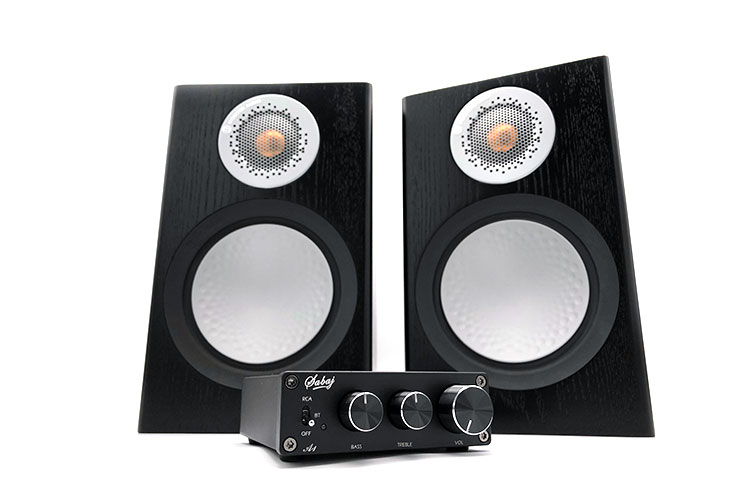This is a review with comparisons on the new Sabaj A1 amplifier which is a Class D desktop unit capable of up to 80W into 4Ω for speakers. It is currently priced at $69.99.
Disclaimer: This is a sample sent to us in exchange for our honest opinion. Headfonics is an independent website with no affiliate links or status. We thank Sabaj for this opportunity.
To read more about amplifiers that we have previously covered on Headfonics click here.
Note, that this article follows our latest scoring guidelines which you can read up on here.
Established in 2016, with over a dozen strong lineups of headphone amplifiers, DACs, and power amplifiers, Sabaj has finally made its debut here on Headfonics.
The unit we have here is the 2022 rebirth of the original A1 and seeks to improve upon the older design’s shortfalls, mainly a more limiting 30 watts per channel of output power.
So, checking out this latest version where it did grow in muscle and features without the need to increase in footprint, it’s exciting to see if there’s a sleeper now hiding inside.
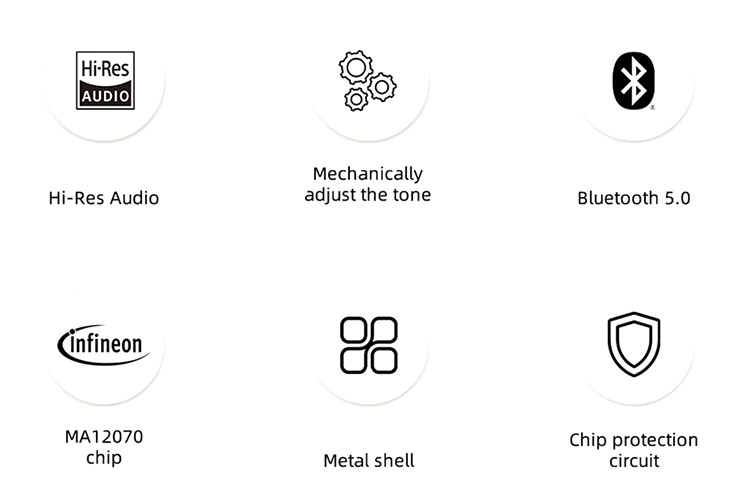
Tech Highlights
Drawing up to 80 watts per channel of output power on 4Ω loads is not impossible with the palm-sized A1. Engineered in a Class-D design, this power amplifier’s internals is driven by a highly efficient Infineon MA12070 chip popular for its proprietary multi-level switching technology operating with little waste in power.
The longevity of the A1 amplifier is also somehow extended thanks to a chip protection circuit built into the internals. Problems with overheating, current spikes, and more should be less of a concern which is a huge bonus since it is passing huge amounts of load to the speakers.
And addressing the common difficulty in gear pairing, the A1 comes with two physical manual adjustments aimed to make speedy tweaks in bass and treble without the need to go through extensive EQ software.
Design
The black aluminum chassis of the A1 is cornered and simple, putting all the attention to the face of the unit having more than a couple knobs and levers available within arm’s reach. Also adding flavor are the four screws in each corner orienting it in the more rugged territory.
Both bass and treble indicators are slightly smaller in diameter and shorter in depth against the volume knob. Adjusting the volume will glide smoothly in the entirety of its range, but the other two have a bit of play, especially in their default 0dB position.
Understandably, the rear of the unit is packed beginning with the speaker terminals set too close to one another which makes pulling out the wires more suitable for those with nimble fingers.
Also having no space for a dedicated button for Bluetooth pairing in front, it was instead tucked between the binding posts and antenna at the rear.
I/O
Accepting two inputs, users can choose between digital and analog through Bluetooth 5.0 wireless playback or via a wired RCA connection. Besides the expected RCA, having a wireless receiver is a welcome direction that will surely appeal to cord-cutters and casual users who are likely to stream from a phone.
Transferring the inputs to two-channel stereo setups are gold-plated binding posts compatible with banana and u-shaped connectors as well as bare wire if necessary. Although those looking to use this with their subwoofer will have to check other options.

Controls
Source or command controls are very basic on the A1 itself. You only have power and select a wired or wireless input once the speakers are connected. Plus, the front is properly labeled to identify where the granular controls are such as input selection and frequency boost.
In Bluetooth mode, the led on the lower right side of the toggle switch turns blue and will turn orange when using the analog input.
Initial pairing in Bluetooth mode is as easy as they come, but pairing to a new device means whipping out any trusty pointed object and having to bend over to the rear of the device to poke through a hole to reenter pairing mode.
With no remote, the volume of the A1 is exclusively handled by the rightmost dial. On its left are two separate controls for bass and treble pulling or pushing the specified frequency by up to 12dB.
Packaging & Accessories
Complimenting the stylized logo of Sabaj printed on the cover is the flip-to-open box in black that appears with a white top and bottom. While the A1 came in slick-looking packaging, having very few accessories, the rest of the unboxing is as straightforward as it gets.
Doing its intended purpose, an attention-grabbing warning card on how not to fry the internals of the A1 is placed right above the unit asking for a quick read.
Taking the amplifier out of its insert on the left area, I found that the dials controlling the bass and treble are turned to the left which should be set to noon to snap it into its default position.
And finally, covering more than half of the box is the huge and weighty 24V power brick plus the Bluetooth antenna residing in a rectangular cut-out on the foam.
Sound Impressions
Amp
Wanting its users to experiment with the low and high-frequency controls, there is no immediate forwardness and emphasis to be found anywhere in its default tuning of the Sabaj A1.
Its low-end has a substance to it that gives it a big and soft hitting body which when played loud will give a satisfying thump, although, it ultimately comes off as dry and a bit rolled-off which holds it back from giving a room-filling weight.
Animated bass guitars are absorbing yet when playing with a busier low-end like having a contrabass horn or drums at the same time, images tend to blur and appear congested limiting accuracy in instrument placement.
Vocals are portrayed slightly more forward than the rest of the track and have a clean center image although duets are slightly harder to isolate.
Soulful singers get their expected vitality with enough air and power in the higher mids without sounding fatiguing. In general, the midrange erring on leanness and honesty which extends to instruments such as the piano.
Unlike the crowded-sounding bass on more energetic music, the top-end gets better control and is easier to place. While still a bit lacking in texture and detail to be fully resolving, its darker and thinner presentation hides this which in effect alters the timbre of a violin missing its affecting and lush character.
The stage width is more honest and intimate than expected with no real issues in directionality. However, separation and imaging are not as precise leaving some room for the listener to imagine where a picture is placed.
Bass/Treble Control
Turning the bass down and setting the control to 11 o’clock tames the detected energy in the low-end frequencies although continuing further to its quarter position affected the tonality of the lower half of the frequency range to sound dull.
For more bass, the right side of the dial is effective at opening up the low-end which could be useful for lighter tracks but if pushed too much it does bleed to the midrange.
Lowering the treble is not a necessity with the safe tuning of the A1 but it does adjust the selected frequency quickly when used. Increasing the higher frequencies upturns the energy and shimmer of instruments but it spreads towards the midrange affecting accuracy in timbre.
Bluetooth
Having a wireless receiver means there is a DAC inside the A1 handling the conversion of the digital signal. Its internal DAC has its sonic characteristics which it then passes on to the amplifier, so flipping the switch to Bluetooth mode I gave it another listen.
Notably, there is an elevated bass presence but since it has a similar rolled-off character it punches more direct rather than soft. Details on the vocals are close with a smoother texture continuing to the rest of the frequencies.
The treble is faster and brighter which highlights the same thin profile of the amp. It does not however translate to a wider stage since quite the opposite the soundscape decreased emphasizing its average layering and imaging.
Synergy
Power
Having an 80-watt per channel power reserve to excite the drivers of most speakers, pushing the Monitor Audio Silver 50 designed with an 8Ω nominal impedance and sensitivity of 87dB is a walk in the park. The only real consideration I found is an audible hiss perceptible up to 6 inches away from the tweeters.
Listening nearfield most of the time, I only had to set the volume at a very conservative 9 o’clock. Filling a 40 square meter area, near noon is where I landed which gives the A1 ample headroom for more sensitive speakers.
Pairings
Trying to get the most out of the A1, I ran it with two DACs coming in at different price ranges, Topping’s newly released DX5 and the Chord Qutest.
Topping DX5 lifts the mid-bass by a small amount which accentuates the body of the drums but leaves the edges hanging. Its honest properties generate a thinner midrange and treble that comes off at times as shouty and at the cost of air.
When the Qutest is working the A1, adjusting the bass and treble using the available controls is almost unnecessary if a neutral presentation is a target. This pairing plus the Silver 50 controls the treble to be well below sibilance and far from fatiguing.


